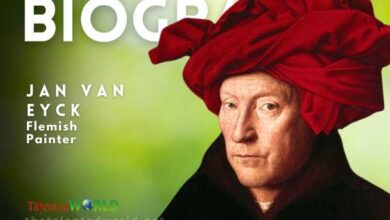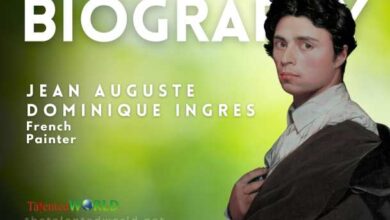
Table of Contents
ToggleQUICK FACTS
Nationality: Pakistani-American
Born: 1969
Age: 51 years
Born Place: Lahore
BIOGRAPHY
Shahzia Sikander (born 1969, in Lahore, Pakistan) is a Pakistani-American visual artist. Sikander works across a variety of mediums, including drawing, painting, printmaking, animation, installation, performance and video. Sikander currently lives and works in New York City.
EDUCATION
Sikander studied at The National College of Arts Lahore in Pakistan, where she was taught the traditional discipline of Indo-Persian miniature painting. She earned a Bachelor of Fine Arts in 1991. Sikander moved to the United States and attended the Rhode Island School of Design (RISD), earning a Master of Fine Arts in Painting and Printmaking in 1995.
Early work and miniatures
Initially I explored the tension between illustration and fine art when I first encountered miniature painting in my late teens. Championing the formal aspects of the Indo-Persian miniature-painting genre has often been at the core of my practice.
— Shahzia Sikander
As an undergraduate student in Lahore, Shahzia Sikander studied the techniques of Persian and Mughal miniature painting, often integrating traditional forms of Mughal (Islamic) and Rajput (Hindu) styles and culture. The traditional form of miniature painting requires equal measures of discipline, gesture and expression in order to execute a careful layering of color and detail. Compositionally, miniature paintings exhibit an extensive display of colorful imagery including, human forms, animals, patterns, shapes, dots and connecting lines. Miniature paintings often engage in contextual complexities such as, religious narrative, scenes of battles and court life. Sikander has integrated the techniques and forms of traditional miniature painting, relying on the layering of images and metaphor to drive her work. Her forms and figures exhibit a quality of continual morphing as transparent imagery is layered, providing a complexity with endless shifts in perception. Sikander’s complex compositions “dismantle hierarchical assumptions and subverts the very notion of a singular, fixed identity of figures and forms.” The increasing approach of continual morphing explains Sikander’s relationship to an ever-changing world where opposing societies coalescently interact.
The Scroll, 1992, is a semi-autobiographical manuscript painting in which Sikander included formal elements of historical manuscript painting. The Scroll portrays scenes of everyday contemporary Pakistani life, including rituals that explore cultural and geographic traditions. Many hues, patterns and incidents appear in The Scroll, identifying Sikander’s attention to small detail, muted color palettes, and understanding of architectural elements juxtaposed with the intimacies of domestic culture. The use of perspective is increasingly noticeable, exhibiting a linear movement of composition. Common concerns of economics, imperialism, colonialism, sexualism and identity are also apparent in Sikander’s early paintings.
Sikander’s attention to detail and formalism assist in the contextualization of her miniature paintings, stemming from an interest in labor, process and memory. Earlier paintings also include elements of Gopi, or the cowherd female devotees and lovers of the deity Krishna in Hindu mythology, while figures of men are depicted as “turbaned warriors.” The Gopi is portrayed in Sikander’s early miniature paintings to “locate visual and symbolic forms within miniature painting that have the potential to generate multiple meanings.” Shahzia Sikander’s most significant use of Gopi can be seen in a series of drawings and digital animation from 2003, titled Spinn. In the animation the characters multiply and their hair separates from their bodies, creating an abstracted form of hair silhouettes. Sikander explores the relationship between the present and the past, including the richness of multicultural identities. Integrated with both personal and social histories, her work invites multiple meanings, operating in a state of constant flux and transition.
The contents of this page are sourced from Wikipedia article on 4 July 2020. The contents are available under the CC BY-SA 4.0 license.





